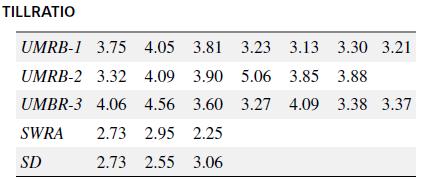Refer to the American Journal of Science (Jan. 2005) study of the chemical makeup of buried tills
Question:
Refer to the American Journal of Science (Jan. 2005) study of the chemical makeup of buried tills (glacial drifts) in Wisconsin, Exercise 14.11. Recall that till specimens were obtained from five different boreholes (labeled UMRB-1, UMRB-2, UMRB-3, SWRA, and SD), and the ratio of aluminum to beryllium measured for each specimen. The data are reproduced in the table. Conduct a nonparametric analysis of variance of the data using α = .10. Interpret the results.

Data from Exercise 14.11
Refer to the American Journal of Science (Jan. 2005) study of the chemical makeup of buried tills (glacial drifts) in Wisconsin, Exercise 2.22. The ratio of the elements aluminum (Al) and beryllium (Be) in sediment is related to the duration of burial. Recall that the Al/Be ratios for a sample of 26 buried till specimens were determined. The till specimens were obtained from five different boreholes (labeled UMRB-1, UMRB-2, UMRB-3, SWRA, and SD). The data are shown in the table. Conduct an analysis of variance of the data. Is there sufficient evidence to indicate differences among the mean Al/Be ratios for the five boreholes? Test using α = .10.
Data from Exercise 2.22
Tills are glacial drifts consisting of a mixture of clay, sand, gravel, and boulders. Engineers from the University of Washington’s Department of Earth and Space Sciences studied the chemical makeup of buried tills in order to estimate the age of the glacial drifts in Wisconsin. (American Journal of Science, Jan. 2005.) The ratio of the elements aluminum (Al) and beryllium (Be) in sediment is related to the duration of burial. The Al/Be ratios for a sample of 26 buried till specimens are given in the table. With the aid of a graph, estimate the proportion of till specimens with an Al/Be ratio that exceeds 4.5.
Step by Step Answer:

Statistics For Engineering And The Sciences
ISBN: 9781498728850
6th Edition
Authors: William M. Mendenhall, Terry L. Sincich




